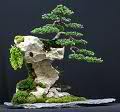 Have you ever wondered how flowers are arranged together to form a symmetric layers of full colors and variety? Or are preserved to look fresh and look real for a period of time in a vase? Well, this kind of activity is based on the skill, artistry, and creativity of the flower arranger and sculptor to show his or her aesthetic creations and well-coordinated hand maneuvering. The flowers are picked, arranged, and organized to show the colors or the blending of leaves, petals, other products, vases or even the containers used to illustrate life. To do this, flowers are orderly packed, stocked, and tied in neatly arranged manner exuding their beauty. As soon as these are organized and blended, the flowers express a feeling of warmth and harmony that magnify the inner soul of the individual making the arrangement or sculpture. In the end, it is the person receiving that manifest gratitude and appreciation, be it as a symbol of love, peace, harmony, or simply care. Most often, it is the interpretation of the person preparing and combining the flowers or plants that makes the difference with the right combination and selection of colors, flowers, leaves, and accents.
Have you ever wondered how flowers are arranged together to form a symmetric layers of full colors and variety? Or are preserved to look fresh and look real for a period of time in a vase? Well, this kind of activity is based on the skill, artistry, and creativity of the flower arranger and sculptor to show his or her aesthetic creations and well-coordinated hand maneuvering. The flowers are picked, arranged, and organized to show the colors or the blending of leaves, petals, other products, vases or even the containers used to illustrate life. To do this, flowers are orderly packed, stocked, and tied in neatly arranged manner exuding their beauty. As soon as these are organized and blended, the flowers express a feeling of warmth and harmony that magnify the inner soul of the individual making the arrangement or sculpture. In the end, it is the person receiving that manifest gratitude and appreciation, be it as a symbol of love, peace, harmony, or simply care. Most often, it is the interpretation of the person preparing and combining the flowers or plants that makes the difference with the right combination and selection of colors, flowers, leaves, and accents.
Flower arrangement comes in two variations. These are either as fresh and or dry treated flower arrangements. Fresh flower arrangement includes preparation and blending of vibrant colored flowers placed in a vase. These may come from a variety of single or double petal flowers with fresh leaves in elongated or variegated presentation. On the other hand, dry arrangements are usually fresh flowers treated with some chemicals which are left to dry or flowers that are subjected to natural air-drying treatment. However, owing to some practical and health reasons, some individuals prefer plastic flowers yet these are still crafted to show value and beauty. There are three flower and plant categories crafted with creativity, artistry, and skill maneuvering of individuals to present and express the beauty and value of flowers. These categories are flower arrangements in a vase, flowers as bouquet or corsage and lays, and plant sculptures.
Ikebana: Flower arrangements in a container
While flower arrangements in the Western world consist of symmetrically arranging in a vase, Japanese point of view is different. Japanese Ikebana, so to speak, is not just plain arrangements but more on prolonging the life of flowers in a balanced manner to show the hierarchy of the natural elements or forces of the universe. Normally, one tries to represent the elements of earth, sky, and humankind in a balanced relation.
Ikebana is a Japanese word which is technically translated as “the art of flower arrangement aesthetically.” Most often, the materials of ikebana can include freshly cut branches, vines, leaves, grasses, berries, fruit, seeds and flowers, as well as wilted and dried plants. However, with its significant contribution to interior design of houses, hotel lobbies, restaurants and other structures, modern arrangements shifted from the traditional ingredients to glass, metal and plastics. Considered as one of the traditional arts of Japan, ikebana has developed a symbolic language as well as decorative concepts, and the use of natural, ephemeral flowers and branches makes the dimension of time an integral part of the creation. The relationship between the materials; the style of the arrangement; the size, shape, texture, volume and color of the container; and the place and occasion for its display are all vitally important factors. Ikebanas’ more than 500-year history, innovations have been conceptualized and developed in a variety and wide range of forms, from simple displays as home decoration to vast landscapes and innovative sculptural works that can fill an entire exhibition hall. Even with modern touches, Ikebana’s traditional forms are continuously studied and created to satisfy one’s appreciation of beauty and harmony. Moreover, the practice of ikebana is believed as a form of meditation that transcends with changing seasons, time, and distance. Others believe that there are religious origins, including implications and strong connection to the natural cycle of birth, growth, decay, and rebirth or as spiritual upliftment.
Flower bouquets, corsages, and leis as life’s rewards
The beauty of flowers can be observed in their orderly and symmetrically arranged forms and styles. This can be attributed by shapes, sizes, colors, and accents. Flowers prepared as bouquet, corsage, and leis are perfect examples of beauty in style. Normally, bouquets, corsage, and leis are made during special occasions. These are given during birthdays, anniversaries, graduations, special events such as beauty pageant, sports activities, and especially weddings. All of these activities use bouquet, corsage and leis one way or the other.
How are these done? A skilled florist can simply prepare one by selecting the best form of fresh flowers combined with leaves, ribbons, pins, or wires. Depending on the required length, flowers are prepared to suit the requirements as the event calls for. Bouquets are prepared for ladies with significant contribution or deserve a winning crown complemented by well-designed gown to show beauty, grace, poise, and elegance. Corsage and leis are for men who deserve the women of their dreams and the stature they represent. Given this representation, one cannot deny that truly, these well-made bouquets, corsage, and leis still goes with life’s treasures and rewards.
Bonsai: The miniature plant sculpture in a container
Bonsai, actually pronounced bone-sigh, refers to a tree in a tray or simply pot. A bonsai is not a genetically dwarfed plant and is not kept small by cruelty in any way. In fact, given an adequate supply of water, air, light and nutrients, a properly maintained bonsai should outlive a full size tree of the same species. Why a tree? Well, it was believed before that dwarfing trees is a symbol of richness and self-fulfillment at the same time development of virtues. Although these are always considered in crafting, there are more items gained to show how the artist sculptures the plant into a miniature presentation.
One of the basic principles considered is the representation and illustration of age when viewed in totality. The tree shows the patience and skill of maneuvering over time. This is the reason why all bonsai are sculptured showing cuts and forms of dwarfing animals such as birds and dragons. These support the animal characters in the Chinese calendar years. Historical documentation describes that bonsai could be traced to Ancient China where dynasties and emperors required that arts displayed in main foyers, pavilions, and lobbies were decorated with sculptured trees.
Over time, bonsai began to take on different styles, each which varying immensely from one another. Bonsai artists gradually looked into introducing other culturally important elements in their bonsai plantings such as rocks, supplementary and accent plants, and even small buildings and people which itself is known as the art of bon-kei. They also looked at reproducing miniature landscapes in nature – known as sai-kei which further investigated the diverse range of artistic possibilities for bonsai.
Today, Bonsai has evolved to reflect changing tastes and times – with a great variety of countries, cultures, and conditions in which it is now practiced. Enthusiasts even now go to Bonsai schools where they teach the art of crafting. Japan, China and other countries have opened schools to ensure that these are continuously a part of their lives. So, crafting Bonsai is meant by the expression “heaven and earth in one container” through blending of physical characteristics and resources of growing the plant and the art of perfection supported by developed values and virtues of the Bonsai artist.
The beauty beyond the crafts
Crafting plants pose a challenge to any individual who appreciates beauty. Unknowingly, one person develops a skill that another cannot duplicate. Why? Simply because there is the creativity and artistry factors that are combined with discipline and perseverance. In a business such as this, individuals would start to understand themselves and maintain a balance of harmony, peace, and joy. Crafts have developed an expression of not only beauty but also life’s lessons and experience. Therefore, if any would start crafting flowers or plants into works of art, you must be prepared to sacrifice first at the beginning of your journey and reap your harvests of satisfaction at the end with people showing that your work is a magnificent and beautiful reflection of the person you are.
Source: Marlowe U. Aquino, PhD- bar.gov.ph, January-March 2007 Volume 9 Issue No. 1
Photo: chinesebonsaiblog.com
Do you like this business ideas for entrepreneurs? content“>then please consider subscribing to our PINOY BISNES ![]() RSS feed. You can also subscribe by email and have new business ideas sent directly to your inbox. (Once you entered your e-mail address, you need to login to your e-mail account and click the link to confirm your subscription).
RSS feed. You can also subscribe by email and have new business ideas sent directly to your inbox. (Once you entered your e-mail address, you need to login to your e-mail account and click the link to confirm your subscription).




Recent Comments